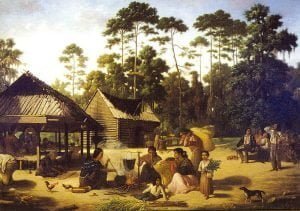Indian Removal and the Legacy
[177]The articles of removal of the 1830 Treaty of Dancing Rabbit Creek were set into motion immediately. By 1831 and 1832 when Removal was in full force mixed bloods still maintained their positions of trust and authority within the tribe. During Removal the percentage of mixed-blood captains — the headmen and leaders of the organized emigrant bands bound for the new Indian nation -was greater than their percentage within the overall population of the tribe (see Chart 22). Their understanding of the English language and the ways of Americans became even more valuable as the bands of emigrants made their way … Read more


